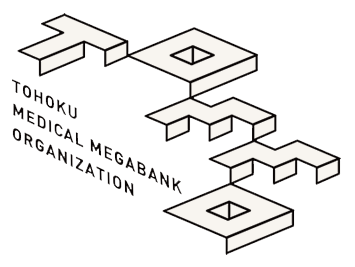Banking on Future Health

By collecting long-term population health data, the Tohoku Medical Megabank Project paves the way for precision medicine and better health in Japan’s earthquake-stricken areas.
Located at the intersection of four continental and oceanic plates, Japan is more prone to nearly 1,500 earthquakes every year1. In March 2011, Japan experienced its strongest earthquake in recorded history: the Great East Japan Earthquake that struck the Tohoku region.
When it came time to rebuild the Tohoku region after the earthquake, Professor Masayuki Yamamoto, Executive Director, Tohoku University Tohoku Medical Megabank Organization, took an active role in personally securing supplies and addressing the community’s medical needs. In addition to dispatching physicians from Tohoku University Hospital to the heavily-damaged coastal area of Miyagi Prefecture, Yamamoto’s efforts culminated in the creation of the Tohoku University Tohoku Medical Megabank Organization (ToMMo).
In its mission to establish an advanced medical system to foster the reconstruction from the earthquake, ToMMo collaborated with Iwate Medical University on a project to develop a biobank of both medical and genomic information from the region. Also known as the Tohoku Medical Megabank Project (TMM), the project aims to use this long-term data to establish a firm basis for a precision medicine approach to tackle diseases aggravated by the Great East Japan Earthquake in the Miyagi and Iwate prefectures.
“Precision medicine and healthcare is the most advanced medicine there is,” said Professor Yamamoto, adding that the biobank will also contribute to the restoration of medical services and revitalise related industries. “The megabank aims to deliver this to those who suffered from the earthquake and tsunami.”
Answering a collective need Precision medicine is an innovative approach to healthcare that combines genetic, lifestyle and environmental data to inform disease prevention and healthcare interventions. The success of this approach thus depends on the availability of data from large cohorts and diverse populations.
As such, long-term population studies, including longitudinal cohorts and biobanks, are essential for promoting precision medicine and healthcare. To this end, TMM first strategically established two large-scale prospective studies of residents from communities most stricken by the earthquake. These are the Community-Based Cohort Study which recruits residents aged 20 years and older, and the Birth and Three-Generation Cohort Study which follows pregnant mothers and their families for up to three generations. Both studies are still ongoing, and over 157,000 participants have been recruited across the two cohorts to date.
From 2013 to 2017, TMM’s cohort studies collected comprehensive biological samples from these participants. Participants are also required to complete questionnaires capturing lifestyle, personal and epidemiological data, while detailed physiological examinations are performed at community support centres at seven locations Miyagi Prefecture.
TMM’s longitudinal design also means that participants return every three to five years to undergo follow-up data collection and analyses, an approach that builds a continuous database of physiological changes over time that can be investigated at the genomic level to further inform medical decisions and precision medicine research.
Genomics for good
TMM has now assembled 50,000 whole genome sequences which will be used in guiding clinical decisions, diagnosing and treating diseases and assisting in drug development. Using the TMM findings, ToMMo also hopes to add further value by attracting more medical practitioners to the area, promoting industry-academic partnerships, and creating employment in related fields.
In addition to using their data for their own genomics and omics research, TMM distributes their samples and related information to the larger research community. This data-sharing model has resulted in a vast number of research publications and collaborations, making the biobank a valuable infrastructure for health research.
To that end, ToMMo has not strayed from their founding mission: to improve the health of residents recovering from the earthquake. ToMMo provides TMM participants with reports of their findings and dispatches physicians on a rotating basis to further bolster healthcare providers in the region.
At the same time, ToMMo set up seven Community Support Centers and four Satellites across the Miyagi and Iwate prefectures as an additional boost to public healthcare on top of serving as locations for biobank data collection and health examinations. Most notably, the integrated database of real-world health data and genome-omics big data can be readily searchable through dbTMM (database TMM), an advanced database for biobank. Furthermore, TMM adopts data visiting system in sharing the genome-omics big data.
ToMMo is dedicated to creating an online platform connecting participants and TMM and also a training programme designed for specialised professionals and experts for the development and maintenance of genome cohorts and biobanks.
With TMM‘s expertise in collecting and distributing samples and data that can be leveraged by researchers across Japan, ToMMo is a good testament for how better health and precision medicine can be advanced at the national—and eventually global—level.
References:
- Learning from Megadisasters: A Decade of Lessons from the Great East Japan Earthquake [Online]. https://www.worldbank.org/en/news/feature/2021/03/11/learning-from-megadisasters-a-decade-of-lessons-from-the-great-east-japan-earthquake-drmhubtokyo
- Kuriyama, S., Yaegashi, N., Nagami, N., Arai, T., Kawaguchi, Y. et al. The Tohoku Medical Megabank Project: Design and Mission. Journal of Epidemiology (2016).

